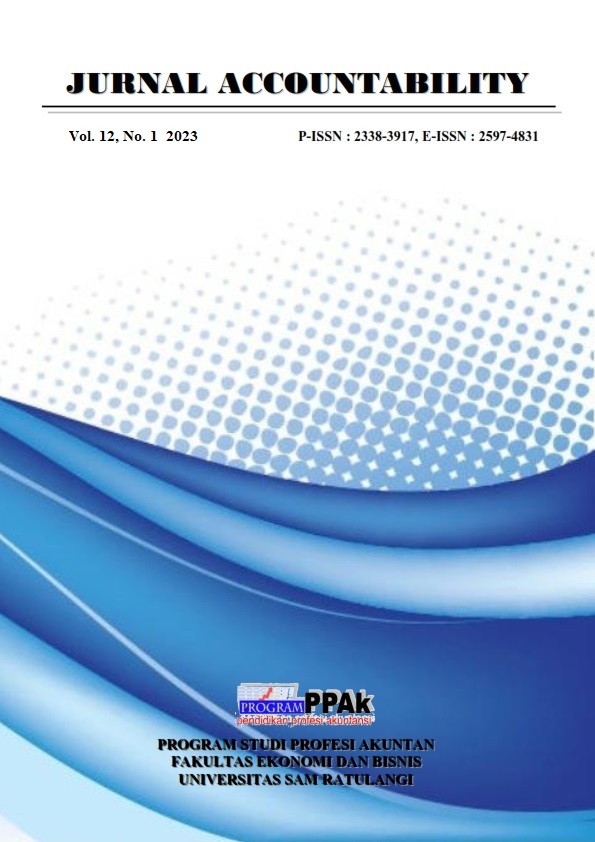THE EVALUATION OF FIXED ASSETS BASED ON SAK-ETAP AT PT. AIR MANADO
Abstract
Abstract: Fixed assets are company assets that have a form, have economic benefits for more
than one year, and are acquired by the Company to carry out company activities, not for resale.
Fixed assets are regulated in the Financial Accounting Standards for Entities Without Public
Accountability 15. In SAK ETAP 15, it is explained that fixed assets must be treated based on
the recognition, measurement, depreciation, recognition of recognition, and disclosure of fixed
assets. This research aims to evaluate the treatment of fixed assets at PT. Air Manado with the
provisions of SAK ETAP No 15 regarding the applicable fixed assets. This study uses a
qualitative descriptive analysis method and research data obtained through interviews and
documentation. The outcomes showed that the accounting treatment for fixed assets owned by
the Company is recognition that follows SAK ETAP 15, measurements that follow SAK ETAP
15, depreciation that follows SAK ETAP 15, recognition that is not following SAK ETAP
because PT Air does not write off fixed assets that have no useful life and remain in the financial
statements where this does not reflect the actual value of these assets. The disclosure needs to
follow SAK-ETAP No. 15. This is because PT Air Manado did not immediately write off the
assets. After all, there needed to be more information obtained by the finance manager from
the relevant division.
Downloads
Published
Issue
Section
License
Copyright (c) 2023 Halena Ngolo, Jenny Morasa, Robert Lambey

This work is licensed under a Creative Commons Attribution-NonCommercial 4.0 International License.
The articles published in Jurnal Accountability are licensed under Creative Commons Attribution-NonCommercial 4.0 International with authors as copyright holders.
Â

This work is licensed under a Creative Commons Attribution-NonCommercial 4.0 International License.
Â
- Share — copy and redistribute the material in any medium or format.
- Adapt — remix, transform, and build upon the material.
- The licensor cannot revoke these freedoms as long as you follow the license terms.
- Attribution — You must give appropriate credit, provide a link to the license, and indicate if changes were made. You may do so in any reasonable manner, but not in any way that suggests the licensor endorses you or your use.
- NonCommercial — You may not use the material for commercial purposes.
- No additional restrictions — You may not apply legal terms or technological measures that legally restrict others from doing anything the license permits.
- You do not have to comply with the license for elements of the material in the public domain or where your use is permitted by an applicable exception or limitation.
- No warranties are given. The license may not give you all of the permissions necessary for your intended use. For example, other rights such as publicity, privacy, or moral rights may limit how you use the material.


